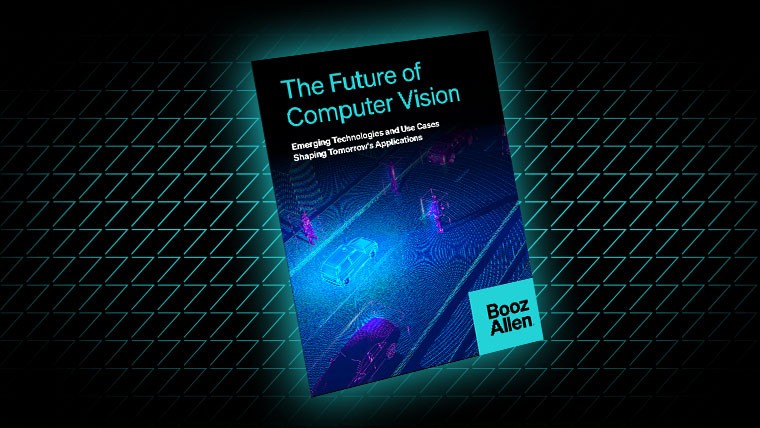When you use Apple’s Face ID to access your iPhone, you're using computer vision. The same is true when you pay automated tolls on the highway, as the technology is increasingly everywhere.
Computer vision uses AI to find, decipher, and extract meaning from visual information. Historically, it’s been used to sort and categorize images, but new versions can assess a scene’s context, detect subtle anomalies, and even predict future events based on visual data. This progress means computer vision systems can now detect wear and tear in a bridge span and provide rich data insights that help decision makers plan maintenance.
Read the new Booz Allen report, The Future of Computer Vision, to:
- Learn the difference between emerging computer vision systems, including multimodal, hyperspectral, and multitemporal
- Understand the data, software, and hardware breakthroughs converging to revolutionize computer vision
- Preview integrations with edge, generative AI, and virtual reality capabilities for highly complex missions
- Track the shift from basic vision tasks to much deeper insight and analysis

